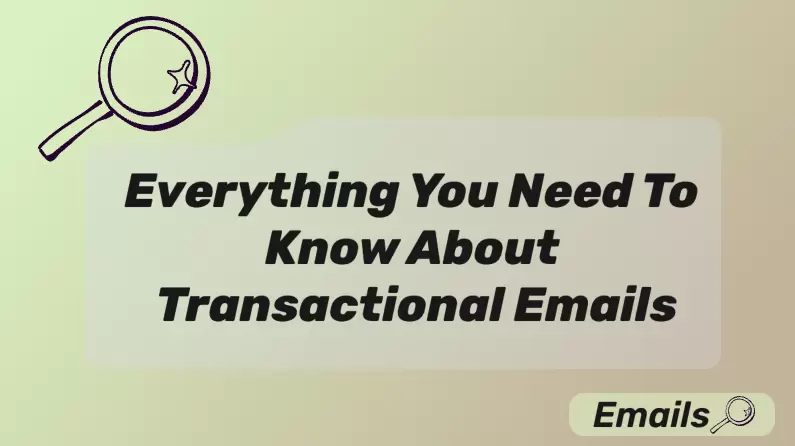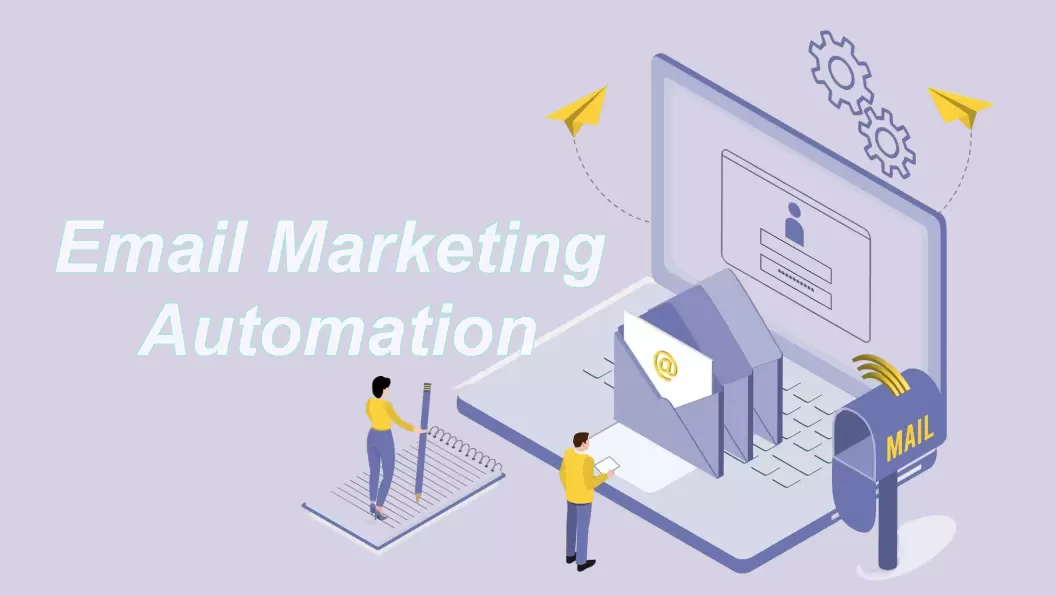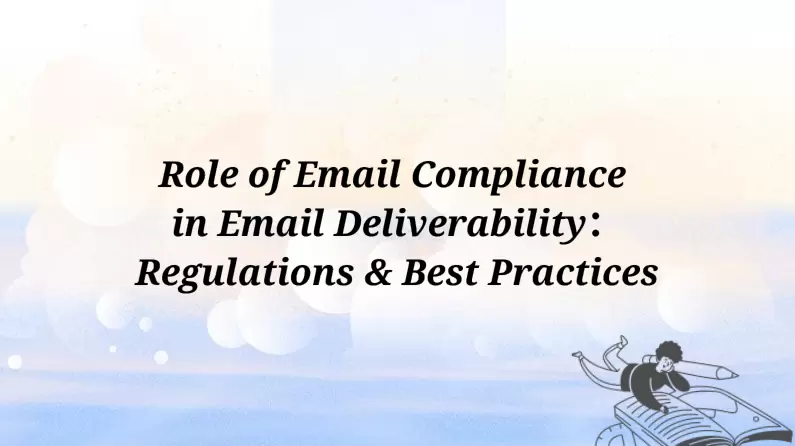When it comes to no-reply emails, there are lots of opinions on the internet. Some say it can do wonders for your business, while the critics are of the view that no-reply emails hurt your email marketing campaigns.
So, in this article, we will explore what exactly is a no-reply email, what are its pros and cons, and finally, whether these emails are right for your business or not.
What is a No Reply Email?
 Note
Note
A no-reply email is a type of unmonitored email address. It blocks the recipients from replying to such emails. The majority of the people have typically received do not reply emails from email addresses that follow the traditional format: "noreply@domain.com"

Generally, businesses, institutions, and government agencies use no-reply emails to send notifications, emergency alerts, order confirmations, subscription details, etc. Even though these types of emails do not necessarily require a response from the recipients, the lack of ability to not reply can end up frustrating them, leading to a higher bounce rate.

Pros and cons of do-not-reply emails
Now that you know the basics of no-reply or do-not-reply emails, let’s discuss their pros and cons in detail.
Advantages of No Reply Emails
-
Minimize spam from customers: Companies and brands need to read and reply to emails from their customers and potential clients. Nevertheless, they can also receive spammy emails from different people. Using do-not-reply emails helps businesses reduce spam from target users.
-
Save resources: Sending emails and replying to each one of them can take up significant time and effort for a company. By sending no-reply emails, you don't have to deal with unnecessary replies and hence save your resources.
-
Maximize privacy: Many banks, financial institutions, and healthcare service providers use no-reply emails to prevent recipients from sending sensitive information.
-
Ensure one-way communication: Not all companies are looking for open communication with their customers. If you only want to provide specific information and ensure one-way communication, no-reply emails are the way to go.
Disadvantages of No Reply Emails
While there are several benefits of using no-reply emails, there are some significant limitations and disadvantages as well:
-
Sent to Junk / Spam: No-reply emails often trigger spam filters. As a result, they are at a higher risk of getting sent to the junk or spam folder. So, companies that are sending do-not-reply emails must be aware of the risk that such emails might not be read by recipients.
-
Mark as a safe email address: Email service providers (ESPs) provide the option of adding email addresses as safe to ensure high deliverability. However, you cannot add a no-reply email address to the address book.
-
Minimum communication: There is no doubt that receiving tons of irrelevant emails and replies from email list subscribers can be frustrating for companies. But using a no reply email closes the communication channel which means your brand can lose out on essential communication with the target audience as well.
-
Can be misleading: Do-not-reply emails can be misleading for the recipients. The subject lines of such emails are like any other email. Not every recipient needs to be reading the sender’s email, so they might not know that they cannot reply to the email until they send a reply and it fails due to the no-reply nature of the email.
-
Reduces the quality of email marketing: Running a successful email marketing campaign is all about establishing successful communication with customers and prospective clients. No-reply emails, however, are focused on communication only from the company’s side, which can cause potential clients to turn away from your products or services.
The following image shows an example where three genuine no-reply marketing emails ended up in the spam folder.

Is No-Reply Email Right for Your Business?
When it comes to deciding whether no-reply emails are right for your business, you need to consider the following factors:
- Size of your business: Large-scale businesses that can have dedicated email addresses, such as no-reply for transactional emails and traditional email addresses for marketing, should go for a separate no-reply email.
- Nature of your business : No-reply emails are great for financial institutions, government agencies, and e-commerce platforms to send emails related to alerts, banking information, and order confirmations because these emails don’t require a reply from the recipients.
- Email’s Content and Context: The exact content, context, and objective of the emails you are sending should also be considered to determine whether you can use do-not-reply email addresses. Generally, if your email provides information that does not warrant a reply from the recipient and is not likely to result in any query from them, you can use no-reply emails.
In short, no-reply emails are right for large businesses, government agencies, banks, financial institutions, or e-commerce businesses using transactional emails.
Why Should You Not Use a No-Reply Email?
While there are a few limited use cases of no-reply emails, there is also a very strong case against it:
- Do-not-reply emails have a higher chance of ending up in the spam folder, which decreases the overall deliverability of your emails. Less deliverability ultimately means a business is not reaching its entire target audience.
- Less interaction with your target audience harms the customer experience which can lead them to avoid buying your products or services.
- Sending bulk emails through the no-reply emails can trigger the ESPs and cause your email to get banned. Hence, your email list of target audiences will not get essential marketing emails from your brand.
- No-reply emails are not illegal, but their nature has significant clashes with reputed data privacy regulations like CAN-SPAM and GDPR.
Overall, the disadvantages of a no-reply email outweigh its use cases and advantages. So, it is recommended that you don’t use a no-reply email. Instead, you should explore its alternatives.
Alternatives to No-Reply Email Addresses
Since no-reply email addresses hurt email marketing campaigns and strategies, it is important to look for some reliable alternatives that can help you reach the target audience successfully.
Following are some key alternatives to no-reply email addresses you should explore:
1. Use Real Email Addresses
The most obvious alternative to no-reply email addresses is to use real email addresses in your company that have the reply option enabled on them. You can create real emails with professional names, such as info@company.com, hr@company.com, or customersupport@company.com to ensure personalization and dedicated email addresses for each department.
2. Use Reliable Engagement Tools
Most companies turn to no-reply emails because they don’t have sufficient resources to handle emails in bulk or send replies manually. This issue can be mitigated to a great extent by using a reliable customer engagement tool like EngageLab that can automate email marketing campaigns.
Using EngageLab allows you to benefit from its modern, secure, and stable email marketing API. Moreover, it ensures high deliverability across the globe, so you can easily manage a large-scale email list with quick and efficient delivery.
3. Filter automated responses
If you are receiving a lot of automated responses, you can filter them out using filters available from ESPs. Such filters can easily be applied to emails containing common terms like 'automated response.' This helps you keep the inbox clean and organized.
4. Use separate emails
Businesses dealing with transactional emails can consider using both no-reply and personalized email addresses. It means sending only transactional emails via do-not-reply emails and marketing emails through traditional emails to ensure high deliverability.
Bonus tips: How to Enhance Email Communication Without No-Reply?
Once you have decided to remove or not use no-reply email addresses, there are a few other tips and strategies you can implement to enhance communication with your target audience through emails.
Analyze your email list and observe if there are any changes in the list before and after the use of a no-reply email list. Some users might have unsubscribed due to no-reply emails. So, once you remove do not reply email addresses, you can contact them again through a personalized email.

Try to personalize the content of your email to ensure high engagement and include some questions like "What would you like to see in our products/services" to engage the recipients and foster conversation. It will also make it clear to the recipient that you are no longer using no-reply emails.

Offer support throughout the customer support to ensure they can rely on you to get complete information and make a purchase.
Most importantly, stop trying to manage all of your email communication efforts manually. Instead, you should rely on a modern tool like EngageLab that can automate key aspects of email marketing, including building an email list, crafting a relevant template, sending emails, and analyzing their performance. In this way, you will be able to streamline the entire email marketing and engagement process.

Frequently Asked Questions (FAQs)
-
1
What happens if you reply with no reply?
A no-reply email is unable to receive replies. So, if you try to reply to a do-not-reply email, you will get a notification that your email cannot be delivered. -
2
Can no-reply emails be flagged as spam?
Yes! No-reply emails from well-known organizations and government agencies are typically not flagged as spam. However, new businesses and brands often face the issue of their no-reply emails getting flagged as spam.







